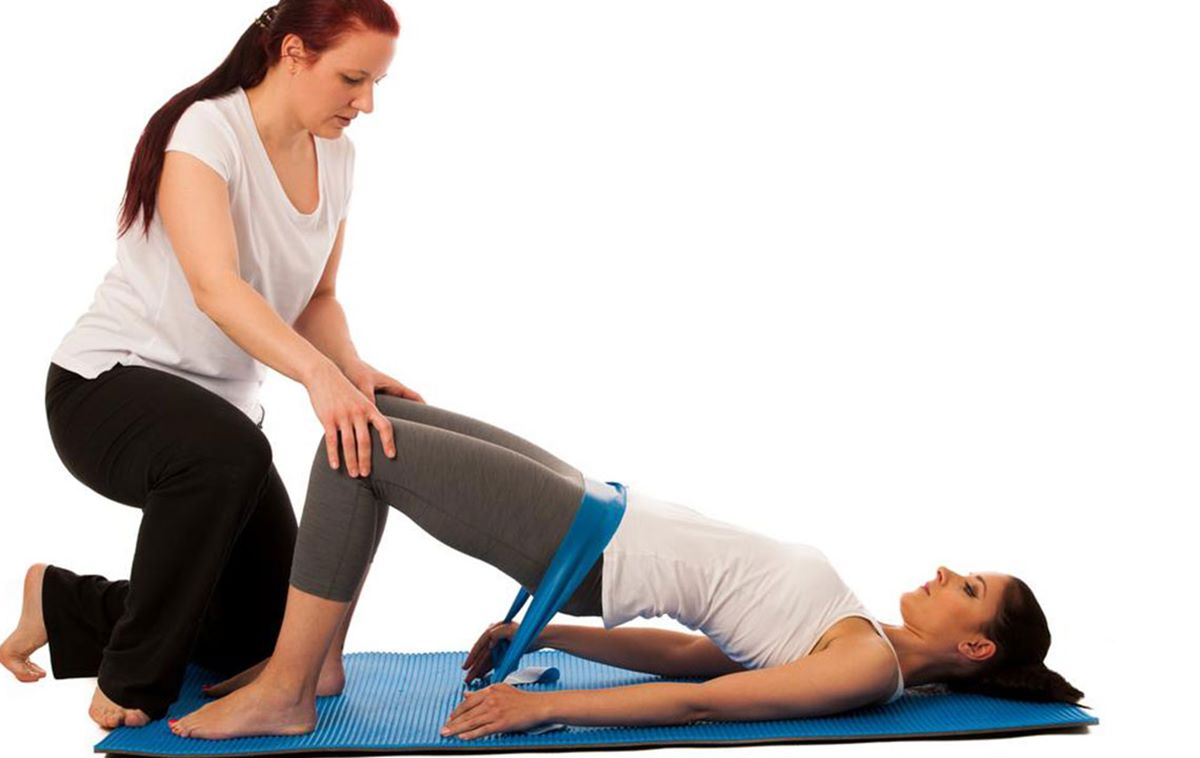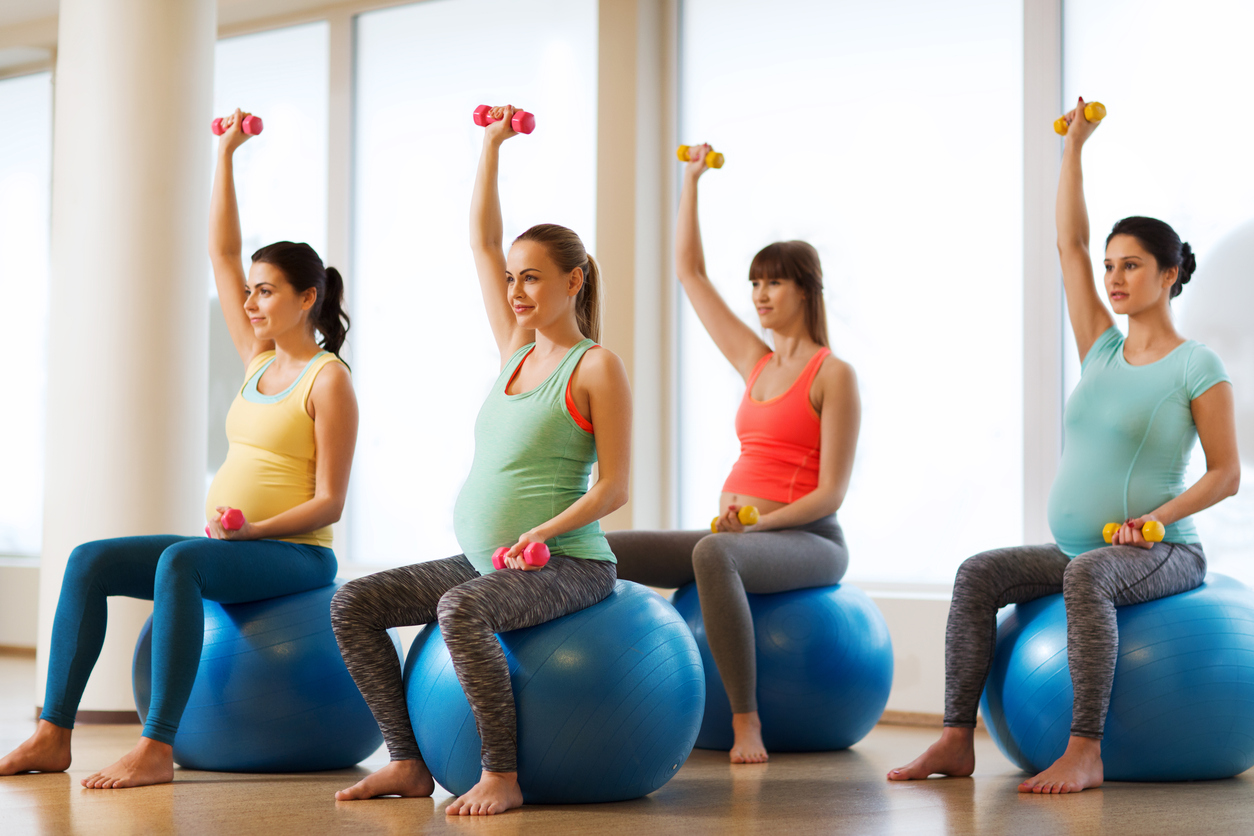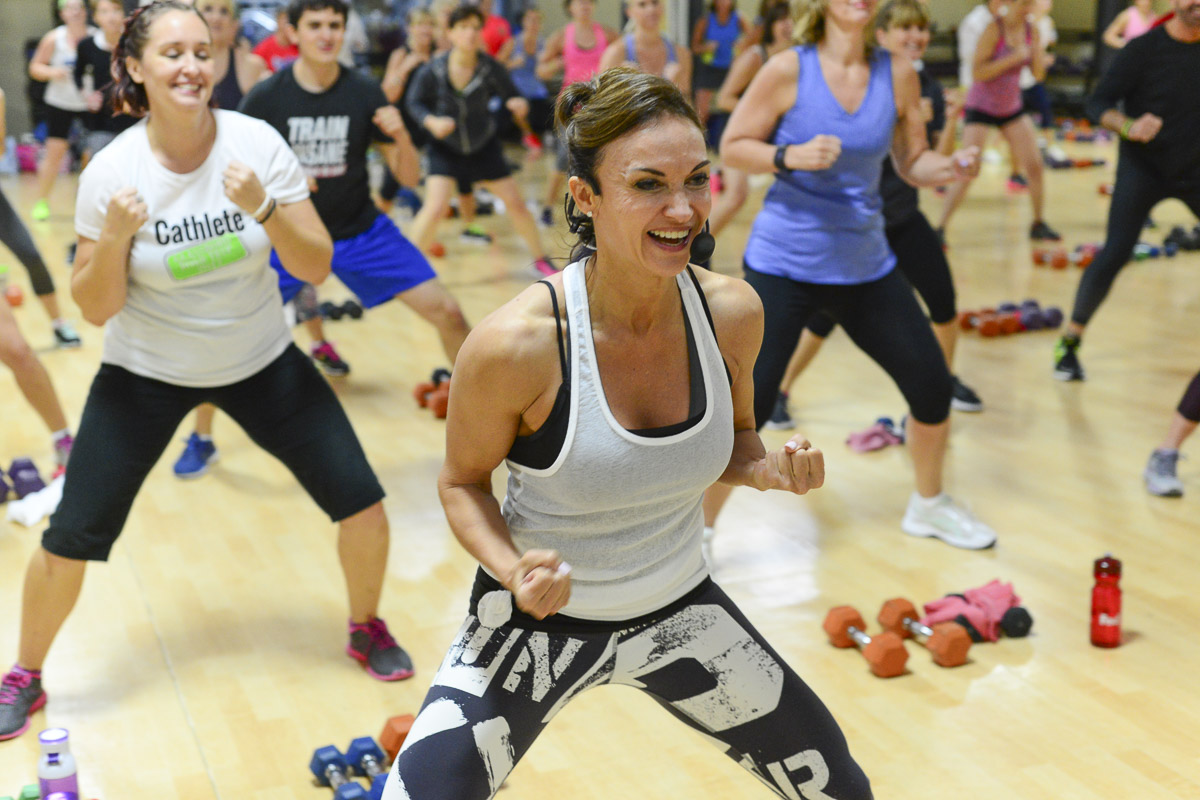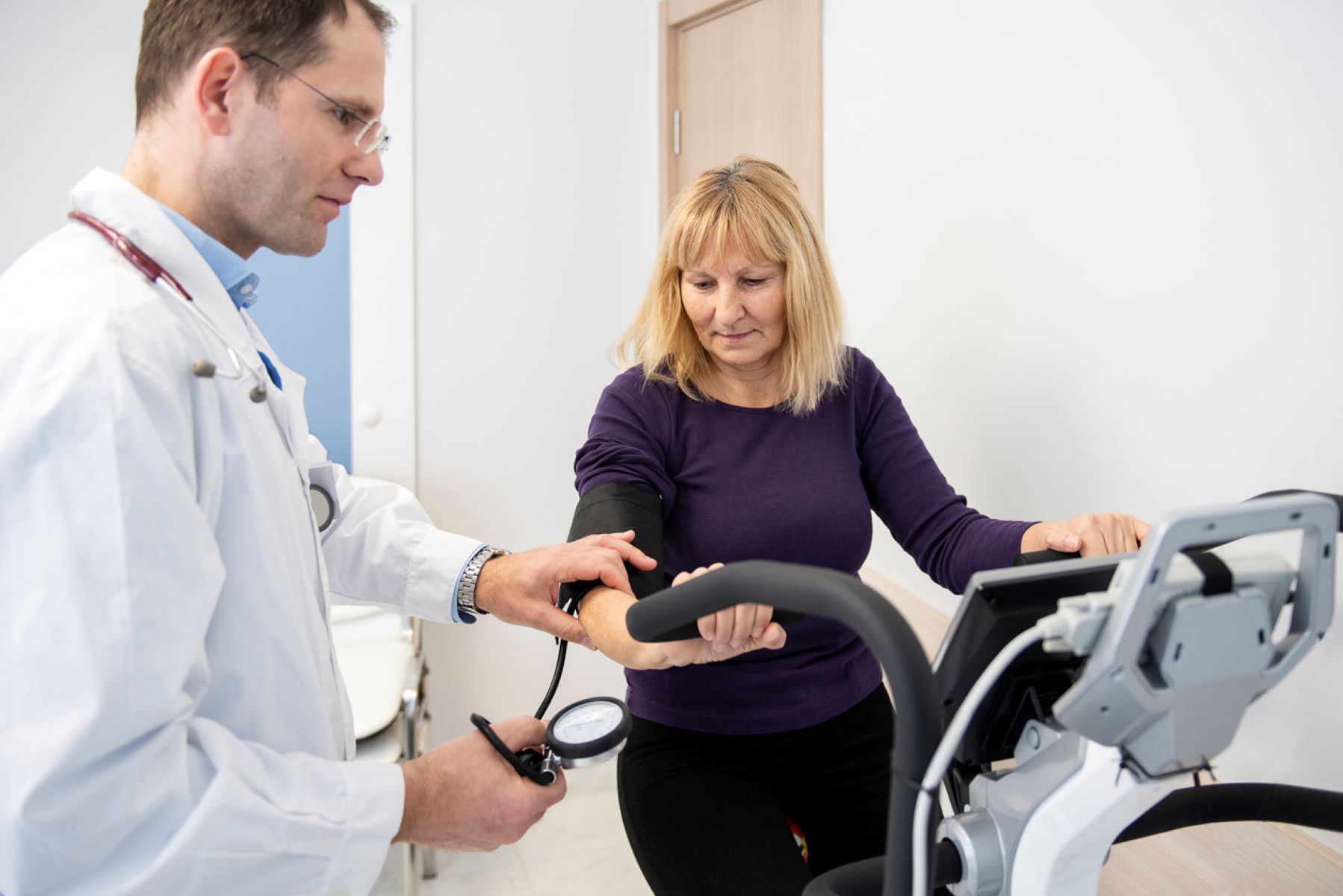

Featured
What Is A Kegel Exercise
Published: September 28, 2023
Discover the benefits of incorporating kegel exercises into your fitness routine. Improve your pelvic floor strength and control with these featured exercises.
Introduction
Welcome to the world of Kegel exercises—an effective way to strengthen your pelvic floor muscles. Whether you haven’t heard of Kegel exercises before or you’re looking to deepen your understanding, this article will provide you with the information you need.
Kegel exercises, named after Dr. Arnold Kegel who first introduced them in the 1940s, are a series of exercises designed to target and strengthen the pelvic floor muscles. These muscles play a crucial role in supporting the bladder, uterus, and rectum, and are responsible for controlling urinary and bowel functions.
While Kegel exercises were initially developed to help women regain and improve bladder control after childbirth, their benefits extend to everyone—regardless of gender or age. Whether you’re a new mom recovering from childbirth or a man wanting to improve your sexual health, Kegel exercises can offer numerous advantages.
In this article, we will explore the history of Kegel exercises, delve into the benefits they provide, explain how to perform them correctly, discuss variations and advanced techniques, and highlight common mistakes to avoid. Additionally, we will provide information on who should do Kegel exercises, precautions to consider, and potential medical conditions that may benefit from this exercise routine.
So, if you’re ready to take control of your pelvic floor muscles, improve your overall well-being, and enhance your quality of life, read on to learn everything you need to know about Kegel exercises!
Definition of Kegel Exercises
Kegel exercises, also known as pelvic floor exercises or pelvic muscle exercises, are a set of exercises specifically designed to target and strengthen the muscles of the pelvic floor. The pelvic floor consists of a group of muscles and tissues that stretch like a hammock across the bottom of the pelvis, supporting the bladder, uterus, and rectum.
These exercises involve contracting and relaxing the pelvic floor muscles, which are responsible for controlling urinary and bowel functions, as well as sexual function. By engaging and strengthening these muscles, individuals can experience improved bladder and bowel control, better sexual satisfaction, and greater pelvic stability.
The purpose of Kegel exercises is to increase the strength and endurance of the pelvic floor muscles, leading to improved muscle tone and function. This can be particularly beneficial for individuals dealing with issues such as urinary incontinence, pelvic organ prolapse, erectile dysfunction, or difficulties in achieving orgasm.
Performing Kegel exercises involves the conscious contraction and relaxation of the pelvic floor muscles. It is important to note that these exercises are not meant to be strenuous or intense, but rather focused and controlled movements that specifically target the muscles of the pelvic floor.
Since the pelvic floor muscles are not visible, identifying and isolating them can be challenging at first. However, with practice and regular exercise, individuals can become more aware of these muscles and learn to engage them effectively.
It is worth noting that Kegel exercises can be performed discreetly, without anyone else knowing you’re doing them. This means you can incorporate them into your daily routine, whether you’re sitting at your desk, watching TV, or even standing in line at the grocery store. The versatility and convenience of Kegel exercises make them accessible to anyone, regardless of their lifestyle or schedule.
Now that we have a clear understanding of what Kegel exercises entail, let’s explore their fascinating history and how they came to be recognized as a valuable tool for pelvic floor health and overall well-being.
History of Kegel Exercises
Kegel exercises have a fascinating history that dates back to the 1940s. They were named after Dr. Arnold Kegel, an American gynecologist who first introduced these exercises as a non-invasive method to help women regain bladder control after childbirth.
Dr. Kegel became interested in the pelvic floor muscles and their role in urinary incontinence while treating women who experienced difficulties with bladder control following childbirth. He observed that weakness in the pelvic floor muscles was a common contributing factor to this problem.
Working diligently to find a solution, Dr. Kegel developed a series of exercises that specifically targeted the pelvic floor muscles. These exercises involved contracting and relaxing the muscles in a controlled manner, enabling women to gain strength and regain control over their bladder function.
Initially, Kegel exercises were primarily associated with postpartum recovery. However, as more research was conducted on the subject, the benefits of these exercises extended beyond childbirth-related issues. They were found to be effective in addressing various pelvic floor conditions, such as urinary incontinence in women of all ages and pelvic organ prolapse.
Over the years, Kegel exercises gained recognition and popularity, receiving endorsement from medical professionals and becoming a standard part of pelvic floor therapy. Today, they are recommended not only for women but also for men who may benefit from strengthening their pelvic floor muscles, such as those experiencing urinary incontinence or erectile dysfunction.
With advancements in technology and accessibility, awareness of Kegel exercises has grown significantly. Online resources, smartphone apps, and specialized devices have made it easier for individuals to learn about and engage in these exercises from the comfort of their homes.
The widespread acceptance of Kegel exercises has also led to the development of specialized clinics and healthcare professionals specializing in pelvic floor physiotherapy. These experts work with individuals to design personalized exercise programs, providing guidance and support to ensure the correct execution of these exercises.
In the next section, we will delve into the wide-ranging benefits that Kegel exercises have to offer and how they can positively impact various aspects of your physical and sexual well-being.
Benefits of Kegel Exercises
Kegel exercises provide a wide array of benefits for both men and women. By targeting and strengthening the pelvic floor muscles, these exercises can have a positive impact on various aspects of your physical and sexual well-being. Let’s explore some of the key benefits of incorporating Kegel exercises into your routine:
- Improved bladder control: One of the primary benefits of Kegel exercises is improved bladder control. These exercises strengthen the pelvic floor muscles responsible for controlling urinary function, reducing the risk of urinary incontinence or leakage.
- Enhanced sexual function: Strong pelvic floor muscles are essential for sexual health and satisfaction. By engaging in regular Kegel exercises, individuals can experience improved sexual function, including increased sensation, enhanced orgasms, and improved overall sexual performance.
- Prevention and management of pelvic organ prolapse: Pelvic organ prolapse occurs when the pelvic organs, such as the bladder, uterus, or rectum, descend and press against the vaginal walls. Kegel exercises can help prevent and manage this condition by strengthening the pelvic floor muscles and providing better support for the organs.
- Quicker postpartum recovery: Women who have recently given birth can benefit greatly from Kegel exercises. These exercises aid in the recovery of the pelvic floor muscles, helping to restore strength and tone after childbirth.
- Improved bowel control: In addition to urinary control, Kegel exercises also strengthen the muscles responsible for controlling bowel movements. This can help prevent or alleviate issues such as fecal incontinence and constipation.
- Increased pelvic stability and support: Strong pelvic floor muscles provide stability and support to the pelvic area. This can be particularly beneficial for individuals who engage in activities that put strain on the pelvic region, such as heavy lifting or high-impact exercise.
- Enhanced overall well-being: Regularly practicing Kegel exercises can contribute to overall physical and mental well-being. The improved muscle tone and control provided by these exercises can boost self-confidence and promote a greater sense of body awareness.
It’s important to note that the benefits of Kegel exercises are not limited to specific age groups or genders. These exercises offer advantages for individuals of all ages, whether you’re a young adult looking to improve sexual function or an older adult managing incontinence or pelvic floor disorders.
Now that we understand the advantages of Kegel exercises, let’s move on to the next section, where we’ll explore the correct technique for performing these exercises and provide guidance on getting started.
How to Perform Kegel Exercises
Performing Kegel exercises is relatively simple once you understand the correct technique. Follow the steps below to ensure you are engaging the right muscles and getting the most out of your workout:
- Locate the correct muscles: To begin, you need to identify your pelvic floor muscles. The easiest way to do this is by stopping the flow of urine midstream. The muscles you use to do this are the ones you’ll be targeting during Kegel exercises. However, it’s important to note that this is only an initial step and not an exercise you should do regularly while urinating.
- Get comfortable: Find a comfortable position to perform the exercises. You can sit, stand, or lie down—whatever feels most natural for you. Make sure to relax your body and avoid unnecessary strain or tension.
- Contract the right muscles: Now that you have identified your pelvic floor muscles, focus on contracting them. Imagine you are trying to lift and squeeze your pelvic floor muscles upward without tensing your abdominal, buttock, or thigh muscles. Make sure to breathe normally during the exercise and avoid holding your breath.
- Hold and release: Once you have contracted the muscles, hold the contraction for a few seconds, aiming for 5-10 seconds initially. It’s normal to start with a shorter hold and gradually increase the duration as your muscles get stronger. After holding, release the muscles and let them relax. Rest for a few seconds before starting the next repetition.
- Repeat and increase intensity: Start with a set of 10 repetitions, gradually working your way up to 3 sets of 10 over time. Remember to take breaks between sets to avoid overexertion. As you progress, you can increase the intensity of the exercises by holding the contractions for longer durations or adding additional sets.
- Consistency is key: Like any exercise routine, consistency is important for seeing results. Aim to perform Kegel exercises at least three times a day. You can easily incorporate them into your daily routine by setting reminders or associating them with specific activities, such as brushing your teeth or sitting at your desk.
It’s important to note that it can take a few weeks to notice significant improvements in muscle strength and control. Be patient with yourself and celebrate small victories along the way.
If you find it difficult to perform Kegel exercises correctly or would like additional guidance, consider consulting with a healthcare professional or a pelvic floor physiotherapist. They can provide personalized instructions, assess your technique, and offer further advice tailored to your specific needs.
In the next section, we will explore variations and advanced techniques that can further enhance your Kegel exercise routine.
Variations and Advanced Techniques
Once you have mastered the basic technique of Kegel exercises, you can explore variations and advanced techniques to further challenge and strengthen your pelvic floor muscles. These variations provide a fresh approach to your routine and can help you progress to the next level. Let’s explore some of these variations:
- Quick contractions: Instead of holding the contraction for a few seconds, try rapidly contracting and relaxing your pelvic floor muscles. Repeat this quick contraction several times in rapid succession. This variation helps improve the muscle’s ability to contract quickly, which can be useful in situations where immediate control is essential, such as preventing accidental leakage.
- Progressive contractions: Start by gently contracting your pelvic floor muscles, gradually increasing the intensity of the contraction until you reach maximum engagement. Slowly release the contraction, going back to the starting point. This technique helps you develop greater control over the range of muscle contraction and relaxation.
- Resistance training: Incorporate resistance into your Kegel exercises by using special weights or balls designed for pelvic floor muscle training. These devices can be inserted into the vagina (for women) or anus (for men) to add resistance and challenge the muscles further. Consult a healthcare professional before using these devices to ensure proper technique and safety.
- Elevated positions: Performing Kegel exercises in different positions, such as standing on tiptoes, standing on one leg, or using an exercise ball, can increase the difficulty and engagement of the pelvic floor muscles. These variations challenge your balance and stability while targeting the muscles from different angles.
- Combining with other exercises: Incorporate Kegel exercises into other strength-training or fitness routines. For example, engage your pelvic floor muscles while doing squats, lunges, or yoga poses. This integration helps to reinforce the importance of engaging the pelvic floor muscles during various physical activities.
- Breathing techniques: Coordinate your Kegel exercises with specific breathing patterns. Inhale deeply, contracting your pelvic floor muscles, and exhale while releasing the contraction. Syncing your breath with the exercise enhances relaxation and improves mind-body connection.
As with any exercise, it’s important to listen to your body and avoid overexertion. If you experience any discomfort or pain during the variations or advanced techniques, stop the exercise and consult with a healthcare professional for guidance.
Remember, the key to progressing with Kegel exercises is consistency and gradual challenges. Don’t be discouraged if you can’t perform the advanced techniques right away. With time and practice, you’ll continue to strengthen your pelvic floor muscles and reap the benefits these exercises have to offer.
Now that we’ve explored variations and advanced techniques, let’s move on to the next section, where we’ll discuss common mistakes to avoid during Kegel exercises.
Common Mistakes to Avoid
While performing Kegel exercises, it’s important to be aware of common mistakes that can hinder your progress or compromise the effectiveness of the exercises. By avoiding these mistakes, you can ensure that you are engaging the correct muscles and maximizing the benefits of your workout. Here are some common mistakes to watch out for:
- Using the wrong muscles: One of the most common mistakes is using other muscles, such as the abdominal or buttock muscles, instead of the pelvic floor muscles. Focus on isolating and engaging only the pelvic floor muscles without straining or involving surrounding muscle groups.
- Not fully relaxing between contractions: It’s crucial to fully relax the pelvic floor muscles between contractions. Some individuals may inadvertently hold tension in these muscles, preventing them from fully relaxing. Take a moment to consciously release the muscles before starting the next contraction.
- Improper breathing: Holding your breath during Kegel exercises can increase tension and make it more difficult to engage the pelvic floor muscles correctly. Remember to breathe naturally and avoid any breath-holding or straining.
- Overexertion: While it’s important to push your limits and challenge yourself, overexertion can lead to muscle fatigue or even injury. Start with a comfortable level of intensity and gradually increase as your muscles become stronger. Listen to your body and avoid pushing beyond your limits.
- Inconsistent routine: Consistency is key when it comes to seeing results with Kegel exercises. Skipping workouts or not adhering to a regular exercise routine can impede progress. Aim to incorporate Kegel exercises into your daily routine and make them a habit.
- Relying solely on Kegel exercises: While Kegel exercises are beneficial, it’s important to remember that they are just one part of a comprehensive approach to pelvic health. Incorporate other lifestyle factors, such as maintaining a healthy weight, practicing good posture, and staying hydrated, to support overall pelvic floor health.
Additionally, it’s always wise to seek guidance from a healthcare professional or a pelvic floor physiotherapist if you have any concerns or specific conditions that may impact your ability to perform Kegel exercises correctly. They can provide personalized advice, address any questions you may have, and ensure that you are following the most appropriate exercise regimen for your needs.
By avoiding these common mistakes and maintaining proper technique, you can make the most of your Kegel exercise routine and achieve the desired results, whether it’s improved bladder control, enhanced sexual function, or overall pelvic floor health.
Now that we’ve discussed common mistakes to avoid, let’s move on to the next section, which explores who should incorporate Kegel exercises into their fitness routine.
Who Should Do Kegel Exercises?
Kegel exercises are beneficial for a wide range of individuals, regardless of age or gender. Whether you are dealing with specific pelvic floor issues or simply want to improve your overall well-being, incorporating Kegel exercises into your fitness routine can be highly beneficial. Here are some groups of people who can benefit from doing Kegel exercises:
- Postpartum women: After giving birth, women often experience weakened pelvic floor muscles. Kegel exercises can aid in the recovery process, helping to regain muscle strength and control, prevent urinary incontinence, and support the surrounding pelvic organs.
- Menopausal women: During menopause, hormonal changes can lead to a decrease in pelvic floor muscle strength. Regularly performing Kegel exercises can help alleviate symptoms of urinary incontinence, reduce the risk of pelvic organ prolapse, and enhance sexual satisfaction.
- Individuals with urinary incontinence: Whether you are dealing with stress incontinence (leakage of urine during physical activities, coughing, or sneezing) or urge incontinence (sudden and uncontrollable urge to urinate), Kegel exercises can be an effective non-invasive method to improve bladder control and reduce leakage episodes.
- Men with erectile dysfunction (ED): Kegel exercises can be valuable for men who experience difficulty achieving or maintaining an erection. Strengthening the pelvic floor muscles can improve blood flow to the genital area and enhance erectile function.
- Individuals with pelvic floor disorders: Those who have been diagnosed with pelvic organ prolapse, pelvic pain, or other pelvic floor disorders can benefit from Kegel exercises. These exercises can provide support to the pelvic organs, alleviate discomfort, and improve overall pelvic floor function.
- Athletes and active individuals: Engaging in high-impact activities such as running, jumping, or weightlifting can put strain on the pelvic floor muscles. Strengthening these muscles with Kegel exercises can provide stability and support, reducing the risk of injury and improving performance.
- People aiming to enhance sexual function: Both men and women can benefit from improved sexual function through Kegel exercises. Strengthening the pelvic floor muscles can enhance orgasm intensity, increase sexual sensations, and contribute to overall sexual satisfaction.
It’s essential to note that while Kegel exercises are generally safe for most individuals, it’s always a good idea to consult a healthcare professional before starting any new exercise program. They can provide personalized advice, address any concerns, and guide you in developing an appropriate exercise routine tailored to your specific needs.
Now that we have explored who can benefit from Kegel exercises, let’s move on to the next section, which discusses precautions and considerations to keep in mind when performing these exercises.
Precautions and Considerations
While Kegel exercises are generally safe and effective, there are some precautions and considerations to keep in mind to ensure you get the most out of your workout and minimize the risk of any potential issues. Here are some important points to consider:
- Seek professional guidance: If you are unsure about how to perform Kegel exercises correctly, or if you have any specific pelvic floor conditions or concerns, it’s advisable to consult with a healthcare professional or a pelvic floor physiotherapist. They can provide personalized guidance, evaluate your technique, and address any questions or concerns you may have.
- Know your limits: Avoid pushing yourself too hard or overexerting your pelvic floor muscles. Start with a comfortable level of intensity and gradually increase as your muscles become stronger. It’s important to listen to your body and avoid any discomfort or pain during the exercises.
- Do not practice while urinating: While using the flow of urine to identify the pelvic floor muscles initially can be helpful, it is not recommended to repeatedly start and stop urine flow during urination as a form of exercise. This can interfere with normal bladder function and may lead to urinary tract infections or other issues.
- Be patient and consistent: Like any exercise routine, it takes time and consistency to see results. Be patient and continue with your Kegel exercises regularly. It may take a few weeks or even months to notice significant improvements in muscle strength and control.
- Combine with other lifestyle factors: While Kegel exercises are beneficial, it’s important to remember that they are just one part of a holistic approach to pelvic health. Maintain a healthy lifestyle, including a balanced diet, regular physical activity, and good hydration. These factors can all contribute to overall pelvic floor health.
- Avoid bearing down or straining: During Kegel exercises, it’s important to avoid simultaneous straining, bearing down, or tensing of other muscles. Focus solely on engaging and relaxing the pelvic floor muscles without involving surrounding muscle groups.
Remember, everyone’s body is unique, and it’s essential to tailor the exercises to your individual needs. If you experience any discomfort, pain, or unusual symptoms during or after Kegel exercises, stop the exercise and consult with a healthcare professional for further evaluation.
By following these precautions and considerations, you can ensure that you are performing Kegel exercises safely and effectively, leading to improved pelvic floor strength, bladder control, and overall well-being.
Now that we have discussed precautions and considerations, let’s wrap up this article by summarizing the key points covered.
Conclusion
Kegel exercises offer a multitude of benefits for individuals of all ages and genders. By targeting and strengthening the pelvic floor muscles, these exercises can improve bladder control, enhance sexual function, prevent or manage pelvic floor disorders, and contribute to overall physical and emotional well-being.
Originally introduced by Dr. Arnold Kegel in the 1940s, Kegel exercises have evolved to become a standard part of pelvic floor therapy. They are effective for postpartum recovery, menopausal women, individuals with urinary incontinence or pelvic floor disorders, athletes, and those seeking to enhance their sexual function.
Performing Kegel exercises correctly is vital to optimize their effectiveness. Remember to identify the right muscles, contract and relax them in a controlled manner, and stay consistent with your exercise routine. Avoid common mistakes, seek professional guidance if necessary, and listen to your body’s limits.
While Kegel exercises are generally safe, it’s important to be aware of any precautions and considerations. Combine Kegel exercises with other lifestyle factors, such as maintaining a healthy weight and good posture, to support overall pelvic floor health.
Whether you’re a postpartum woman, a man dealing with erectile dysfunction, or someone simply looking to improve pelvic floor strength and function, incorporating Kegel exercises into your fitness routine can make a significant difference in your quality of life.
So, take control of your pelvic floor muscles and reap the numerous benefits that Kegel exercises have to offer. Start practicing these exercises today and experience the positive impact they can have on your pelvic health and overall well-being.









